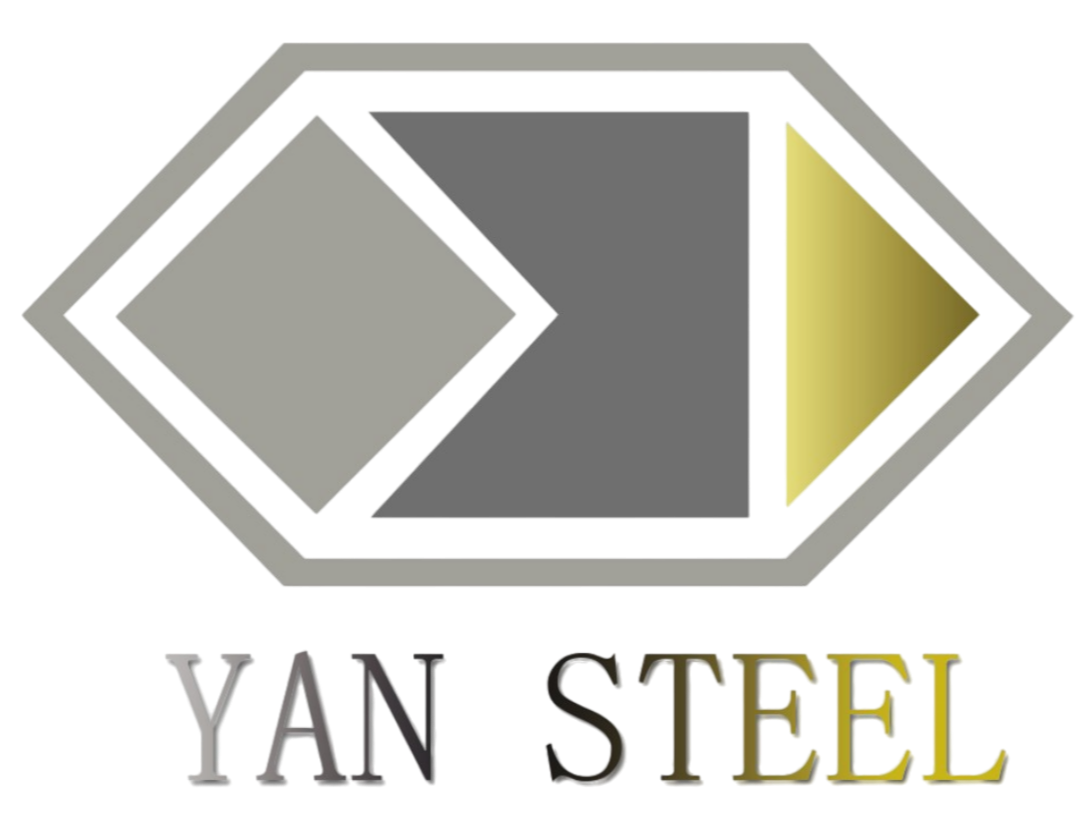ការដឹកជញ្ជូនសន្លឹកដំបូលរថយន្តដែលធ្វើពីដែកថែបនៅប្រទេសចិន: វិញ្ញាបនបត្ររោងម៉ាស៊ីន ការដឹកជញ្ជូននិងប្រតិបត្តិការផ្នែកកក់សម្ភារះ
1. វិញ្ញាបនបត្រសំខាន់ៗរបស់រោងចក្រផលិតដែកថែបសម្រាប់ធ្វើតួរថយន្ត
- IATF 16949 : នេះគឺជាស្តង់ដារអន្តរជាតិសម្រាប់ប្រព័ន្ធគ្រប់គ្រងគុណភាពក្នុងវិស័យរថយន្ត។ វាបានជំនួសស្តង់ដារចាស់ ISO/TS 16949 និងផ្តោតលើការកែលម្អជាប្រចាំ ការការពារកំហុស និងការកាត់បន្ថយការប្រែប្រួល។ រោងចក្រផលិតដែកចិនណាមួយដែលផ្គត់ផ្គង់ដែកសម្រាប់ប្រអប់រថយន្ត គួរតែមានវិញ្ញាបនបត្រ IATF 16949—វាធានាថា ដែកត្រូវបានផលិតឡើងដោយមានការគ្រប់គ្រងគុណភាពតឹងរ៉ឹង ចាប់ពីដំណាក់កាលដើមរហូតដល់ការត្រួតពិនិត្យចុងក្រោយ។
- ស្តង់ដារ GB : ស្តង់ដារជាតិរបស់ប្រទេសចិន (GB) សម្រាប់ដែកប្រអប់រថយន្ត ដូចជា GB/T 3273 (ដែកប្រអប់រថយន្តបង្រួញត្រជាក់) និង GB/T 20887 (ដែកប្រអប់រថយន្តបង្រួញក្តៅ) បញ្ជាក់ពីសម្បត្តិមេកានិក (កម្លាំងទាញ និងការយឺត) និងប្រភាគគីមី (ខ្លឹមសារកាបូន ម៉ាង់កានេស)។ រោងចក្រផលិតដែកទាំងនោះត្រូវសอดคลោងតាមស្តង់ដារទាំងនេះ ដើម្បីលក់ក្នុងស្រុក និងនាំចេញ។
- វិញ្ញាបនបត្រតេស្តរោងចក្រ (MTC) : គ្រប់ការដឹកជញ្ជូននៃសន្លឹកដំបូលរថយន្តដែលធ្វើពីដែកគ្រឿងមួយៗគួរតែមាន MTC (ដែលគេហៅថាវិញ្ញាបនបត្រសម្ភារៈ)។ ឯកសារនេះបញ្ជាក់ថាដែកដែលបានផ្គត់ផ្គង់គឺត្រូវតាមសេចក្តីកំណត់ដែលបានយល់ព្រម រួមមានការវិភាគគីមី (ឧ. កាបូន ≤ 0,12%) ការសាកល្បងមេកានិច (ឧ. កម្លាំងទាញបំបែក ≥ 340 MPa) និងគុណភាពសំបកការពារ (ប្រសិនបើមាន)។ សូមតែងតាំងស្នើសុំ MTC ដើម្បីបញ្ជាក់ពីគុណភាព។
- វិញ្ញាបនបត្របន្ថែម : សម្រាប់សន្លឹកដំបូលរថយន្តដែលធ្វើពីដែកដែលមានគុណសម្បត្តិពិសេស (ឧ. ដែកមានកម្លាំងខ្ពស់សម្រាប់ផ្នែកប្រឆាំងការបុក) សូមស្វែងរកវិញ្ញាបនបត្រដូចជា ISO 9001 (គុណភាពទូទៅ) ឬការយល់ព្រមដែលផ្តាច់មុខតាមតម្រូវការអតិថិជន (ឧ. ពីក្រុមហ៊ុន Toyota, Volkswagen ឬ Ford)។ វិញ្ញាបនបត្រទាំងនេះធានាថាដែកនោះសាកសមនឹងតម្រូវការផលិតកម្មជាក់លាក់ណាមួយ។
2. ការយល់ដឹងអំពីរយៈពេលដឹកជញ្ជូនសន្លឹកដំបូលរថយន្តនៅក្នុងប្រទេសចិន
- ទំហំការបញ្ជាទិញ : ការបញ្ជាទិញតូចៗ (ឧទាហរណ៍ ៥០-១០០តោន) នៃដែកធ្វើកាបូបយន្តស្តង់ដាអាចមានដំណើរការដឹកជញ្ជូនប្រហែល ៤-៦សប្តាហ៍ ពីព្រោះរោងចក្រជារឿយៗមានស្តុក។ ការបញ្ជាទិញធំ (លើសពី៥០០តោន) ឬការកំណត់សំគាល់ពិសេស (ឧទាហរណ៍ កម្រាស់ ឬ សំរបសំរួលពិសេស) អាចចំណាយពេល ៨-១២សប្តាហ៍ ពីព្រោះរោងចក្រត្រូវការពេលវេលាក្នុងការផលិត និងធ្វើតេស្តលើដែក។
- ភាពអាចរកបាននៃវត្ថុធាតុដើម : ការផលិតដែកធ្វើកាបូបយន្តអាស្រ័យលើវត្ថុធាតុដើមដូចជាក្រឺស៊ីដែក និងលោហៈផ្សំផ្សេងៗ។ ប្រសិនបើវត្ថុធាតុដើមទាំងនេះខ្វះចន្លោះ (ដោយសារតែការផ្លាស់ប្ដូរផ្នែកទីផ្សារ) ដំណើរការដឹកជញ្ជូនអាចយឺតយ៉ាវបន្ថែមទៀត ២-៤សប្តាហ៍។ សហការជាមួយរោងចក្រដែលមានអ្នកផ្គត់ផ្គង់វត្ថុធាតុដើមដែលមានស្ថេរភាព ដើម្បីកាត់បន្ថយហានិភ័យនេះ។
- កត្តាភូមិអាកាស : រោងចក្រនៅប្រទេសចិនជារឿយៗកាត់បន្ថយការផលិតក្នុងឱកាសបុណ្យចូលឆ្នាំ (ខែមករា/ខែកុម្ភៈ) ដែលនាំឱ្យដំណើរការដឹកជញ្ជូនយឺតយ៉ាវ (រហូតដល់១៤សប្តាហ៍)។ សូមគ្រោងទុកការបញ្ជាទិញមុន ២-៣ខែក្នុងអំឡុងពេលនេះ ដើម្បីជៀសវាងការខ្វះខាតក្នុងខ្សែផ្គត់ផ្គង់របស់អ្នក។
- ការត្រួតពិនិត្យគុណភាព : ការត្រួតពិនិត្យដោយភាគីទីបី (តម្រូវដោយអ្នកទិញជាច្រើន) នឹងបន្ថែមពេលវេលាដល់ដំណើរការ 1–2 សប្តាហ៍។ ការត្រួតពិនិត្យទាំងនេះនឹងផ្ទៀងផ្ទាត់ថាឧបករណ៍ដែកសម្រាប់ធ្វើរថយន្តគ្រប់គ្រាន់តាមស្តង់ដារ ដូច្នេះសូមគិតគ្រប់យ៉ាងឲ្យបានត្រឹមត្រូវនៅពេលកំពុងគ្រោងពេលវេលា

- បង្កើតភាពជាដៃគូជាមួយរោងមីល ដែលមានស្តុកដែកថែបសម្រាប់ធ្វើរថយន្តនានាទុកជាមុន។
- ចុះហត្ថលេខាលើ contrac វែងអំពីការផលិតដើម្បីកក់កន្លែងផលិតជាមុន។
- យល់ព្រមជាមុននូវសេចក្តីដែលបានកំណត់ ដើម្បីចៀសវាងការផ្លាស់ប្ដូរថ្មីៗនៅពេលចុងក្រោយ ដែលបណ្ដាលអោយយឺតពេលក្នុងការផលិត។
3. គន្លឹះស្តីពីការដឹកជញ្ជូន និងការផ្គត់ផ្គង់ដែកថែបសម្រាប់ធ្វើរថយន្តពីប្រទេសចិន
-
ជ្រើសរើសប្រភេទដឹកជញ្ជូនដែលសាកសម :
- ដឹកជញ្ជូនតាមសមុទ្រ : មានតំលៃសមរម្យបំផុតសម្រាប់ការបញ្ជាទិញចំនួនច្រើន (20+ តោន)។ វាត្រូវការពេលវេលា 2-6 សប្តាហ៍ (អាស្រ័យលើទិសដៅ: ឧទាហរណ៍ 2 សប្តាហ៍ទៅអាស៊ីអាគ្នេយ៍ និង 4-6 សប្តាហ៍ទៅអឺរ៉ុប/អាមេរិកខាងជើង)។ ប្រើប្រាស់ធុងពេញ (20ft or 40ft) ដើម្បីកាត់បន្ថយហានិភ័យនៃការគ្រប់គ្រង និងការខូចខាត។
- ដឹកជញ្ជូនដោយរថភ្លើង : លឿនជាងការដឹកជញ្ជូនដោយសមុទ្រ (1-3 សប្តាហ៍ទៅអឺរ៉ុបតាមរយៈផ្លូវរថភ្លើងចិន-អឺរ៉ុប) ប៉ុន្តែប្រើប្រាស់ថ្លៃបន្តិច។ សាកសមសម្រាប់ការបញ្ជាទិញមធ្យមដែលត្រូវការដឹកជញ្ជូនលឿន។
- ដឹកជញ្ជូនដោយយន្តហោះ : លឿនបំផុត (3-7 ថ្ងៃ) ប៉ុន្តែមានតំលៃខ្ពស់។ ប្រើប្រាស់សម្រាប់ការបញ្ជាទិញតូចៗ និងចាំបាច់ (ឧទាហរណ៍ គ្រឿងបំពេញសម្រាប់បន្ទាត់ផលិតកម្ម)។
-
ការវេចខ្ចប់សម្រាប់ការការពារ :
ដែកសម្រាប់ធ្វើរថយន្តងាយនឹងដែកចោល និងខូចខាតក្នុងកំឡុងពេលដឹកជញ្ជូន។ សូមប្រាកដថាក្រុមហ៊ុនផលិតប្រើប្រាស់៖- វេចខ្ចប់ប្រើប្រាស់ដែលទប់ស្កាត់សំណើម (វេចខ្ចប់ដោយផ្លាស្ទីក ឬក្រដាសប្រៀបប្រ oil) ដើម្បីការពារដែកចោល។
- ប្រអប់ឈើ ឬតំប៉ូលដែកសម្រាប់ការជួរ កាត់បន្ថយការកោង ឬការខូចរាង។
- ស្លាកសម្គាល់ច្បាស់លាស់ដោយមានលេខកំណត់ សម្គាល់បច្ចេកទេស និងសេចក្តីណែនាំក្នុងការគ្រប់គ្រង ដើម្បីជៀសវាងការភាន់ច្រឡំ។
-
សម្រួលដំណើរការគយ :
ត្រៀមលើកឯកសារទាំងនេះដើម្បីជៀសវាងការយឺតយ៉ាវ៖- វិក័យប័ត្រពាណិជ្ជកម្ម (ដែលមានព័ត៌មានលម្អិតអំពីកំរិតដែកសម្រាប់ធ្វើរថយន្ត បរិមាណ និងតម្លៃ)។
- បញ្ជីបញ្ចុះ (ត្រូវតែត្រូវគ្នានឹងវិក័យប័ត្រ និងខ្ទង់ដែលដឹកជញ្ជូន)។
- វិញ្ញាបនបត្រពីរោងចក្រ និងវិញ្ញាបនបត្រ IATF 16949។
-
វិក័យប័ត្រដឹកជញ្ជូន (សម្រាប់ការដឹកជញ្ជូនដោយទឹក/ដោយរថភ្លើង) ឬវិក័យប័ត្រដឹកជញ្ជូនដោយអាកាស (សម្រាប់ការដឹកជញ្ជូនដោយអាកាស)។
ធ្វើការជាមួយភ្នាក់ងារគយក្នុងស្រុក ដែលមានចំណេះដឹងអំពីបទបញ្ញាត្តិនៃឧស្សាហកម្មរថយន្ត ដើម្បីបំពេញដំណើរការគយឱ្យបានលឿន។
- តាមដាន និងពិនិត្យការដឹកជញ្ជូន :
ប្រើប្រាស់ឧបករណ៍តាមដានការដឹកជញ្ជូន (ដែលផ្តល់ដោយអ្នកជំនួញដឹកជញ្ជូន) ដើម្បីតាមដានដែកសម្រាប់ធ្វើរថយន្តរបស់អ្នកកំពុងធ្វើដំណើរ។ នៅពេលដល់ដំណើរ សូមពិនិត្យមើលខ្ទង់ដើម្បីមើលថាមានការខូចខាត (ដុំប៉ោង ឬ ដែកដោយសារសើម) ហើយបញ្ជាក់បរិមាណឡើងវិញថាត្រូវតាមបញ្ជីបញ្ចុះដែរឬអត់។ សូមរាយការណ៍បញ្ហាទាំងនោះទៅកាន់រោងចក្រ និងអ្នកផ្តល់សេវាការដឹកជញ្ជូនភ្លាមៗ ដើម្បីអាចទទួលបានការសងទំនិញប្រសិនបើចាំបាច់។
4. ជ្រើសរើសរោងចក្រផលិតដែកសម្រាប់ធ្វើរថយន្តដែលត្រឹមត្រូវនៅប្រទេសចិន
- ពិនិត្យសញ្ជាតិ ៖ ផ្ទៀងផ្ទាត់សញ្ជាតិ IATF 16949 និងស្តង់ដារ GB តាមរយៈមូលដ្ឋានទិន្នន័យផ្លូវការ (ឧទាហរណ៍ គេហទំព័រនៃអាជ្ញាធរសញ្ជាតិនិងការទទួលស្គាល់នៃប្រទេសចិន)។ ជៀសវាងរោងមីលដែលមានសញ្ជាតិមិនច្បាស់លាស់ ឬអស់សពុល។
- ស្នើសុំគំរូ ៖ មុននឹងបញ្ជាទិញចំនួនច្រើន សូមស្នើសុំគំរូដែកសម្រាប់ធ្វើរថ្នីរថយន្ត ដើម្បីធ្វើតេស្តលើសម្បត្តិមេកានិច (កម្លាំងទាញ និងភាពងាយស្រួលក្នុងការបត់) និងគុណភាពនៃការបិទបាំង (ប្រសិនបើអាចអនុវត្តបាន)។ នេះនឹងធានាថាដែកនោះសាកសមនឹងតម្រូវការផលិតកម្មរបស់អ្នក។
- វាយតម្លៃសមត្ថភាពផលិត ៖ ជ្រើសរើសរោងមីលដែលមានសមត្ថភាពផលិតប្រចាំឆ្នាំស្របទៅនឹងទំហំការបញ្ជាទិញរបស់អ្នក។ រោងមីលមួយដែលផលិតដែកសម្រាប់ធ្វើរថ្នីរថយន្តចំនួន 500,000 តោនឬច្រើនជាងនេះក្នុងមួយឆ្នាំ ប្រហែលជាអាចទទួលបានការបញ្ជាទិញចំនួនច្រើនបានល្អជាងរោងមីលតូច។
- វាយតម្លៃការទំនាក់ទំនង ៖ ជ្រើសរើសរោងមីលដែលមានក្រុមលក់ដែលនិយាយភាសាអង់គ្លេសបាន ដើម្បីជៀសវាងការយល់ច្រឡំ។ ការទំនាក់ទំនងច្បាស់លាស់នឹងជួយដោះស្រាយបញ្ហាបានលឿន ដូចជាការភ្ជាប់ទំនិញយឺត ឬការផ្លាស់ប្ដូរបញ្ជាក់លម្អិត។
សំណួរញឹកញាប់
ខ្ញុំនឹងត្រូវពិនិត្យដូចម្តេចដើម្បីដឹងថា សញ្ជាតិ IATF 16949 របស់រោងមីលនោះពិតជាត្រឹមត្រូវឬអត់?
តើអ្វីទៅជាចំនួនកិត្តិយសតិចបំផុត (MOQ) សម្រាប់ដែកធ្វើតួរថ្មីរថយន្តនៅប្រទេសចិន?
ខ្ញុំគួរធ្វើអ្វីប្រសិនបើការដឹកជញ្ជូនដែកធ្វើតួរថ្មីរថយន្តរបស់ខ្ញុំមានការយឺតយ៉ាវ?
តើខ្ញុំអាចការពារដែកធ្វើតួរថ្មីរថយន្តមិនឱ្យដែកចោលបានយ៉ាងដូចម្តេចខណៈពេលដឹកជញ្ជូន?
តើមានហានិភ័យបញ្ហាគុណភាពនៅលើដែកធ្វើតួរថ្មីរថយន្តចិនដែរឬទេ?
ទំព័រ ដើម
- 1. វិញ្ញាបនបត្រសំខាន់ៗរបស់រោងចក្រផលិតដែកថែបសម្រាប់ធ្វើតួរថយន្ត
- 2. ការយល់ដឹងអំពីរយៈពេលដឹកជញ្ជូនសន្លឹកដំបូលរថយន្តនៅក្នុងប្រទេសចិន
- 3. គន្លឹះស្តីពីការដឹកជញ្ជូន និងការផ្គត់ផ្គង់ដែកថែបសម្រាប់ធ្វើរថយន្តពីប្រទេសចិន
- 4. ជ្រើសរើសរោងចក្រផលិតដែកសម្រាប់ធ្វើរថយន្តដែលត្រឹមត្រូវនៅប្រទេសចិន
-
សំណួរញឹកញាប់
- ខ្ញុំនឹងត្រូវពិនិត្យដូចម្តេចដើម្បីដឹងថា សញ្ជាតិ IATF 16949 របស់រោងមីលនោះពិតជាត្រឹមត្រូវឬអត់?
- តើអ្វីទៅជាចំនួនកិត្តិយសតិចបំផុត (MOQ) សម្រាប់ដែកធ្វើតួរថ្មីរថយន្តនៅប្រទេសចិន?
- ខ្ញុំគួរធ្វើអ្វីប្រសិនបើការដឹកជញ្ជូនដែកធ្វើតួរថ្មីរថយន្តរបស់ខ្ញុំមានការយឺតយ៉ាវ?
- តើខ្ញុំអាចការពារដែកធ្វើតួរថ្មីរថយន្តមិនឱ្យដែកចោលបានយ៉ាងដូចម្តេចខណៈពេលដឹកជញ្ជូន?
- តើមានហានិភ័យបញ្ហាគុណភាពនៅលើដែកធ្វើតួរថ្មីរថយន្តចិនដែរឬទេ?

